 For me, like most that had the opportunity, my first experience with the Nintendo Entertainment System (NES) was at a young, impressionable age. Sure, we had an Atari before that, and a couple of games. But it was the NES that had the largest and most lasting impact on me. I was probably about 5 years old when my neighbor, Miles, beckoned me into his home, touting that he had a new game system, with promises of a dragon. Inside I was introduced to Super Marios Bros, and, as I recall the memory, I imagine my jaw remained unhinged for the length of my visit. It wouldn’t be long before an NES reached my home, and many years followed where I would journey, sometimes alone, sometimes with friends, through a rich expanse of worlds. Fast-forward to around 2002 or 2003, during my college years, where I decided to unpack (and dust off) my old NES. It felt like it had just been long enough where coming back to it felt meaningful. By this time, multiple systems had already come and gone, and the NES, for most, had been forgotten, often only surfacing in a garage sale put up by a parent cleaning an attic. This is also when I learned about the unreliable and degradation of the 72 pin connector. A few dollars and a few weeks later, a replacement arrived from a vendor on eBay. I recall opening up the system with a feeling that was akin to an archaeologist unearthing a sacred grave. In some ways, it felt like an invasion, and in another, it felt like exploring a newly discovered planet.  After getting the NES operational again, I casually played a few games. It wasn’t long until I was back at it with modern games like Grand Theft Auto III: Vice City and Counter-Strike. My NES was quickly forgotten, re-boxed and packed away. Perhaps it was simply too soon. It’s now 2018, thirty-three years after the North American release of the NES. At work, we have a #retrogames channel in Slack, where we discuss all things related to retro gaming (including the definition of what retro gaming is). It was in this community that the emotions I have deeply ingrained with the NES resurfaced. Quickly I plunged into all things retro gaming. I binged listened to countless episodes of the Retronauts podcast. I grinded through books like I Am Error, Legends of Localization Book 1: The Legend of Zelda, The Anatomy of Castlevania: The NES Trilogy, and NES Works Volume I and II. I played modern takes on 8 and 16 bit style games, such as Axiom Verge and Owlboy. I also found myself back in a place I hadn’t been since the early 2000s: eBay. My collection of original NES carts quickly doubled. In the last 6 months I learned more about classic gaming than I had ever known. I gained layers of appreciation and understanding that simply didn’t exist prior. While in doing so, some of the charm of my memories may have been tainted, yet overall, my lasting impressions of what retro gaming means to me has been greatly enhanced. It reminded me a bit like my experience in studying film in college, as once I understood what the man behind the curtain was doing I could now love these things deeper, but the man could never be unseen, and thus some of the illusions were forever lost. As I prepared my original NES for its return performance I came prepared with the knowledge that hooking an NES up to a 4K television was not going to be an ideal experience. However, I couldn’t even get that far, as just like in the previous round through memory lane, my NES failed to load any games. After a deep clean and another new pin connector I was back on track. This time my goal was to experience games I had never played before, or those that I had only a glimpse of in their infancy. I decided to start with Crystalis. As feared, the combination of the NES on a modern TV was a mess. The colors were off. Any movement on screen was distorted. And I could see the preloaded artifacts on the right side of the screen, which was an area that would have been obscured on a CRT television. I knew this just wasn’t going to work. Thankfully, there are heroes in this world that have produced gems like the AVS, which plays original NES (and Famicom) carts and outputs to HD. I went ahead and ordered one, and felt back on track. I’ve since played a number of games, and not all to completion. I dabbled in games like The Battle of the Olympus, drawn to the Zelda II: The Adventure of Link style (or to be blunt, it’s a total rip-off). And played a few levels here and there with Batman: The Video Game, Commando, and The Legend of Kage. With so many games brought into my home all at once I had too much to choose from, a luxury that didn’t exist back in the 80s, which resulted in my fickleness. Thus far, at the time of writing this, the only two I have completed end-to-end are Crystalis and Metal Gear (both great). Playing games as old as these, so many years later, after experiencing games evolve, and having those games be ones I had never played, resulted in a nostalgia-cocktail. It’s an experience that has been rather intoxicating. I often feel transported back in time, as if I just received ones of these games as a gift. Ignoring everything I have learned and experienced since then, however, is sometimes a challenge, and it’s not something that I feel one should even bother to block out. There is enjoyment to be found in comparing these games to those that followed, to feel the evolution and see what inspired the future. Granted, a hidden door in Metal Gear that is part of the critical path made me want to pull my hair out a little, and it was something I ended up looking up online. But this was the NES! Random, hidden doors was a sign of the time, and I can accept that. Warning: Sweet Home spoilers ahead 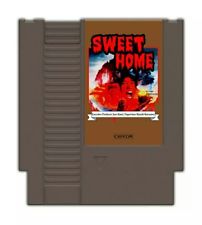 Which brings me to Sweet Home. If you haven’t heard of Sweet Home then you are not alone, as it was only ever officially released in Japan. The version I am playing is a translated reproduction cartridge, meaning it isn’t an original NES game, but you wouldn’t know that by the looks of it. Sweet Home, produced by Capcom, is a precursor to the Resident Evil (Biohazard) series. Similar to Resident Evil, it’s a survival horror themed game that takes place in a creepy mansion filled with creatures and zombies. The mechanics draw similarities as well, as you progress by collecting items, backtracking, and using those items to progress in the form of light puzzles. Notes left behind offer clues to both your advancement and the grander story. Even the ability to toggle between characters is later found in Resident Evil Zero. Where Sweet Home differs from the Resident Evil lineage the most is two-fold: 1) it’s an RPG, and 2) what makes this game so unique is how you partner with the five playable characters. With regards to the latter, the dynamic of grouping (and ungrouping) with your fellow trapped survivors is what makes the game unique and special. You are restricted to no more than three characters in a party at a time, and each character can only hold two items, in addition to their special item. This forces the player to make strategic decisions. Do I have a good set of items for what I anticipate ahead? If I need items from the group of two I left behind will they be able to safely catch up to the party of three? You’re constantly making trade-offs, and while on occasion it feels somewhat tedious, it mostly feels engaging. And at times, safety in numbers can backfire. I find myself often toggling between holding a stance that the clues are too literal, and thus, too easy, and wishing the game was more challenging. And then, just minutes later, my entire party of three will fall into a pit, hanging for their lives, and because I wasn’t careful enough my remaining party of two isn’t able to get to them in time to save them. It’s actually moments like these that really up my appreciation for this game as it’s these types of creative surprises that adds flavor. 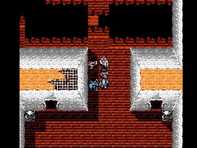 While I save often in this game, in fear of permanently losing a character, there was a moment that occurred early in the game where I decided to not reset and, instead, decided to accept and carry on. I had crossed a pit to obtain an essential item, by placing a log to form a bridge. My party of three doubled back after gathering the item, and this is when the character in the center of the line broke the bridge and hung to the edge. I was able to pull the character back up, but this meant that one of my other characters, Asuka, was now stranded on the other side. I ended up leaving Asuka on that lonely island for a huge portion of the game, always knowing, or at least hoping, that I would come back. It was a promise I made both to myself as a player as well as between the characters in the context of the game world. Eventually I found more logs, returned, and saved my friend. It was a sense of relief to finally be reunited. That was also when I realized that Asuka, all along, had a log in her inventory that she could have used to cross that gap. I laughed to myself. The survival horror theme is bolstered even further by the ways in which characters become separated. If you’re like me, you occasionally take unnecessary risks in games (especially if you just saved your progress) in an effort to push the boundaries of the game. For example, there are spirits that will pull a character away from their group, plopping them in a room many screens away. The wisest decision in this moment would be to take the remaining two characters that are still bound together, and to have them navigate to their lost friend. However, like foolish teenagers in countless horror movies, I will often take my solo character and journey on, acting as if I am confined to the perspective of that person. Ask yourself, if you were taken from your friends by ghosts, would you sit still in a strange room? Probably not. Now, a solo trek like this can be disastrous, as you might break a flimsy plank that stretched across a pit, with no one to pull you up. Or you will face enemies alone, and with a finite number of healing items available in the game, this isn’t wise (assuming you even have an item to heal yourself with). This is actually where another ingenious mechanic comes into play: the ability to call for help. In this mode, another character (or set of characters) has limited time to run towards their comrade and assist them. It’s a heart-pounding moment. 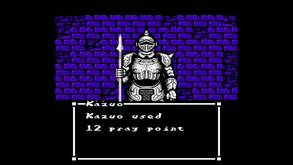 Further on the topic of encounters, as mentioned before, this is an RPG, albeit a rather atypical one. Battles are randomly triggered, with the exception of the fights that ensue when you come into direct contact with enemies that traverse across some of the screens. The battles are rather simple, made up primarily of attacks and prayer (think magic). Many of the traditional systems found in RPGs, such as collecting coins, purchasing weapons and items, and resting at inns to regain health, do not exist in Sweet Home (nor do they have a place here). Rather, there is no currency, weapons and items are discovered, and hit points and prayer points are replenished only with tonics. The environments powerfully convey the mood. In this vast mansion you twist and turn down hallways, up and down stairs leading you to great heights and depths, and explore the outer areas surrounding the property. Each section is truly unique, ranging from underground labyrinths to a lakeside forest. The top-down view is contrasted by more detailed scenes of paintings and monuments, and the occasional open door animation. Most areas, in addition to having their own visual complexity, are accompanied by a variety of music compositions that fit snugly in the horror genre. A rolling low tone base line is accented by squealing highs. There is a deliberant tempo juxtaposition between the moderate beats-per-minute (BPM) of the exploration music and the upbeat, panic inducing songs that quickly loop and build anxiety when you battle enemies and suffer from poison. 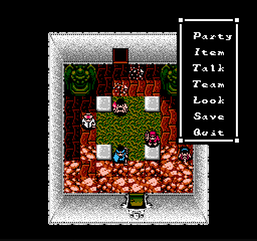 Even with the limitations of the NES, Sweet Home managed to nail the theme of what survival horror should be. You’re scared. You’re often alone. Your resources are limited. Danger lurks behind every corner. The atmosphere is terrifying. A sinister backstory slowly reveals itself, making the world that much more frightening. Death is final. Not only did Sweet Home bring me back to the joy of experiencing a new NES experience, it also reminded me of the pleasure of solving mysteries through the use of taking notes. Note taking, for many, in and outside the context of gaming, is considered a chore. Growing up in the days of the NES, however, it was not just helpful at times, but often essential. Drawing maps, scribbling down clues, recording passwords...these are all staples of the NES experience. At this point, from what I can gather from the progression of the story, I’m close to the end. As for what comes next, I will dip into the backlog of titles I still have waiting for me, and keep playing, for as long as it still feels like home. And who knows, maybe in another 10 years I’ll dust off my NES games one more time for another go.
0 Comments
Leave a Reply. |
AuthorBrian Riggsbee lives in San Francisco CA. He enjoys gaming, writing, creating art, practicing Brazilian Jiu-Jitsu, chasing adorable dogs, and spending time with his wife and boy. Categories
All
Archives
December 2022
|
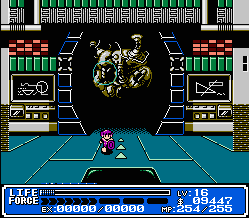
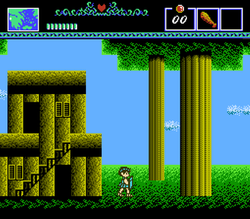
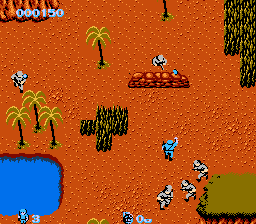
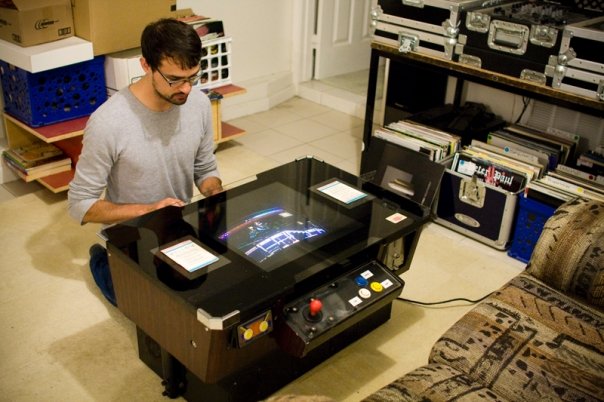
 RSS Feed
RSS Feed